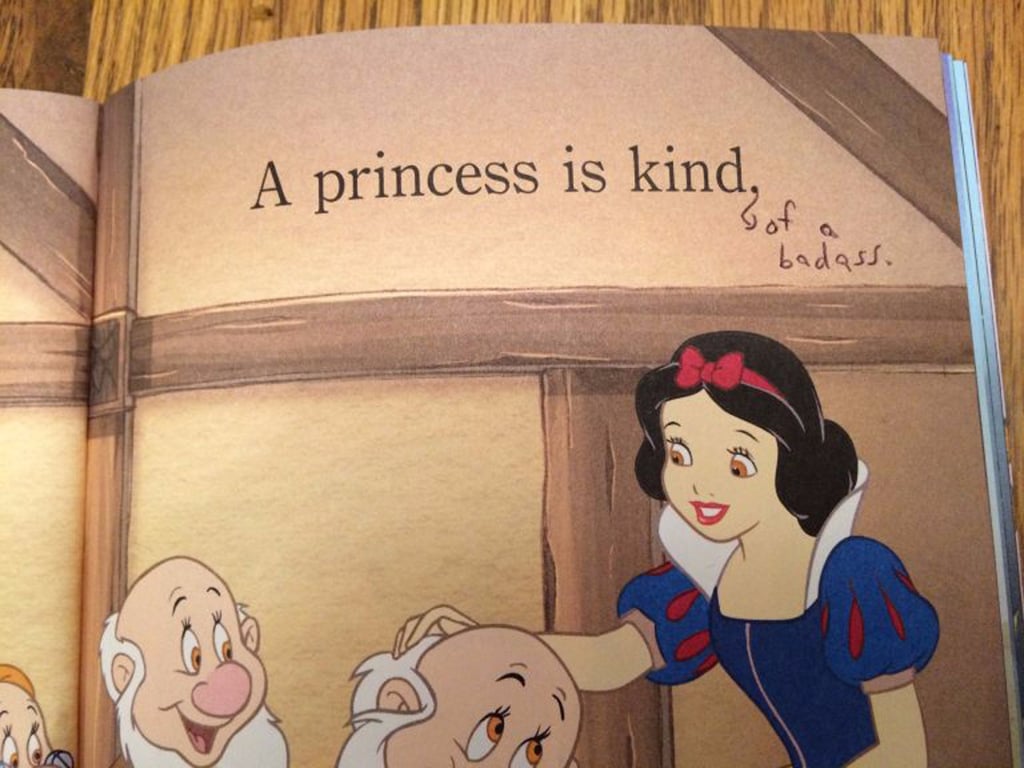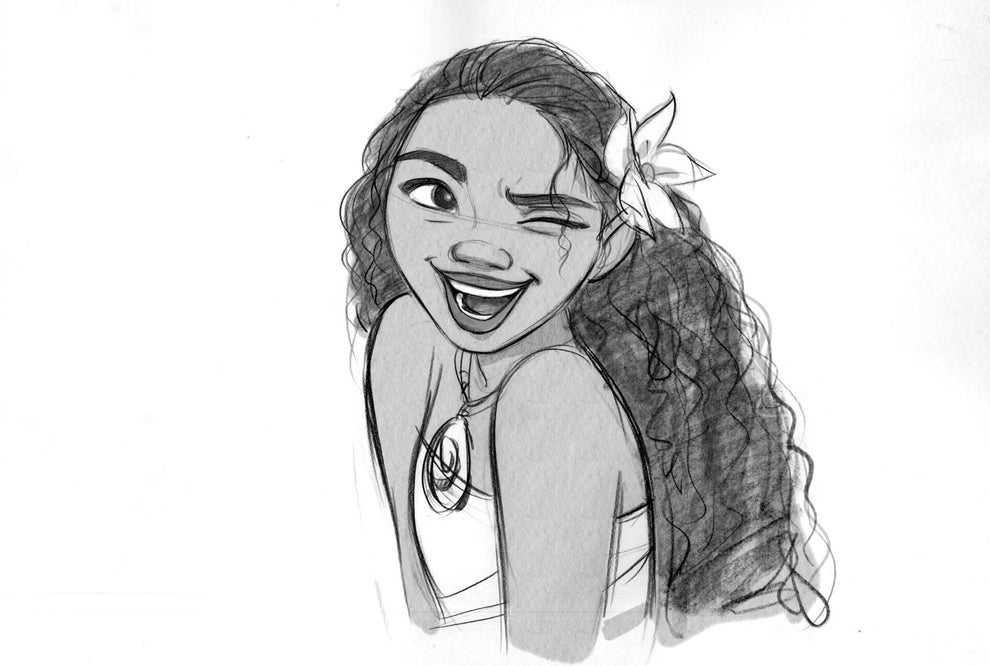| http://www.reactiongifs.com/tag/snow-white/ |
Snow White and the Seven Dwarfs is the oldest Disney full-length animated film, and the company definitely took a risk in making it. People weren't convinced that a story about a stepmother wanting to kill her child would sell, but according to animator Ollie Johnston, "Walt convinced us that this could be done so that it would be believable, and we all believed him."
These are all of the human characters that are seen on screen.
 |
| http://www.hutui6.com/snow-white-wallpapers.html |
The grand total is 10, including Snow White. Imagine only talking to ten people your entire life. People need socialization. Snow White falls in love with a man she barely knows because she is looking to fill a void in her life that her stepmother created. It should not be surprising that Snow White's dream is to find love, security and a family, when all she’s ever known is hatred and envy.
Snow White discovers love and family when she begins living with the seven dwarfs. While living with them, there is a noticeable change in the princess’ demeanor. Snow White is happier, and she is frequently seen smiling and laughing on screen. Watch her sing optimistically to the dwarves.
Whereas before she was more sad, longing for a companion, now Snow White is confident and optimistic that she will find happiness in her future. Being around other people certainly brings out more of her true personality which she had to hide from the evil stepmother. Snow White has at last found a family with the dwarfs, and this is what brings her true happiness.
Snow White reveals that when the princesses are isolated, they are waiting for their prince to rescue them, rendering them passive and essentially helpless.
| https://brontehoroine.wordpress.com/2012/11/12/coffins-glass-and-otherwise/ |
| http://www.irishcentral.com/travel/reasons-to-love-irish-summers |
While Snow White is coerced into isolation, limiting her opportunities to make something of herself, the opposite occurs for Elsa in Frozen, who chooses to pursue solitude.
Elsa isolates herself out of fear of hurting her sister with her ice powers. The first incident is when she strikes Anna in the head as a child. Elsa locks herself away in her room and tells herself to "conceal, don't feel." Initially, this is just for her powers. It continues to grow to include all of her emotions and feelings. Without anyone to talk to, Elsa begins to doubt herself and her ability to lead. Essentially, Elsa locks herself away in order to reduce her risk (and therefore her fear) of harming other people with her magical abilities, but ends up hurting herself.
Elsa’s physical isolation in her room has an unforeseen effect on Anna, who is left abandoned. The castle gates are closed, and no matter how hard Anna tries to get Elsa to build a snowman with her, Elsa refuses. Anna spends her days alone. So when she is finally presented with an opportunity to socialize with people at the coronation, she is overwhelmed and realizes the gaping hole left in her life due to her loneliness. Just like Snow White, she falls in love with the first man she meets, even though there are seventy-six years in between the two films. This proves that isolation is inherently problematic to humans. This time around though, Disney doesn't allow the princess to go through with it.
Thanks for reminding us of that, Elsa and Kristoff.
Returning to Elsa, when she sings the chart-topping hit "Let It Go" alone on the North Mountain, she is free to be herself, and finally accepts herself for who she truly is. She has a newfound confidence in herself that makes her personality come alive.
This sentiment of embracing yourself for who you are has spread across the globe.
People find inspiration in Elsa's message.
Elsa isolates herself out of fear of hurting her sister with her ice powers. The first incident is when she strikes Anna in the head as a child. Elsa locks herself away in her room and tells herself to "conceal, don't feel." Initially, this is just for her powers. It continues to grow to include all of her emotions and feelings. Without anyone to talk to, Elsa begins to doubt herself and her ability to lead. Essentially, Elsa locks herself away in order to reduce her risk (and therefore her fear) of harming other people with her magical abilities, but ends up hurting herself.
| https://www.pinterest.com/pin/364439794825286685/ |
Elsa’s physical isolation in her room has an unforeseen effect on Anna, who is left abandoned. The castle gates are closed, and no matter how hard Anna tries to get Elsa to build a snowman with her, Elsa refuses. Anna spends her days alone. So when she is finally presented with an opportunity to socialize with people at the coronation, she is overwhelmed and realizes the gaping hole left in her life due to her loneliness. Just like Snow White, she falls in love with the first man she meets, even though there are seventy-six years in between the two films. This proves that isolation is inherently problematic to humans. This time around though, Disney doesn't allow the princess to go through with it.
 |
| https://www.pinterest.com/pin/390757705141978657/ |
| http://31.media.tumblr.com/f97e485256cee1982dd020e7fe9a9f87/tumblr_myjiu6tPx01rqhztwo1_500.gif |
Thanks for reminding us of that, Elsa and Kristoff.
This sentiment of embracing yourself for who you are has spread across the globe.
People find inspiration in Elsa's message.
How YOU respond to adversity determines the story YOU write. #MentalToughness— Ben Newman (@ContinuedFight) December 6, 2016
Rise UP #LetItGO
Some people in the LGBTQ community feel like they are able to see themselves in Elsa.
What we can see from Elsa is that when the princess chooses solitude, it is a step in the right direction because she is controlling her own future. It is feminist and it rocks!
 |
| http://www.popsugar.com/moms/Mom-Gives-Disney-Princess-Book-Feminist-Upgrade-42824146#photo-42824156 |
Tiana in "The Princess and the Frog" arguably has the best situation. She lives in New Orleans with a loving family, she works hard to achieve her dreams, and she gets the guy.
| http://sempeternal.tumblr.com/post/38294194809 |
There are no other Disney princesses as independent and hardworking. This is because instead of living alone in the forest with animal friends or running to an isolated mountain, Tiana has a loving community that encourages her to pursue her dreams. She has choices.
| http://prettylicii.tumblr.com/post/48083393303 |
She even has a female best friend, Charlotte. When's the last time Disney allowed two females to get along like these two?
| http://disneyenchanted.tumblr.com/post/49142029070 |
#YouGoGirl!
| http://rebloggy.com/post/mine-disney-the-princess-and-the-frog-tiana-almost-there/34394291016 |
